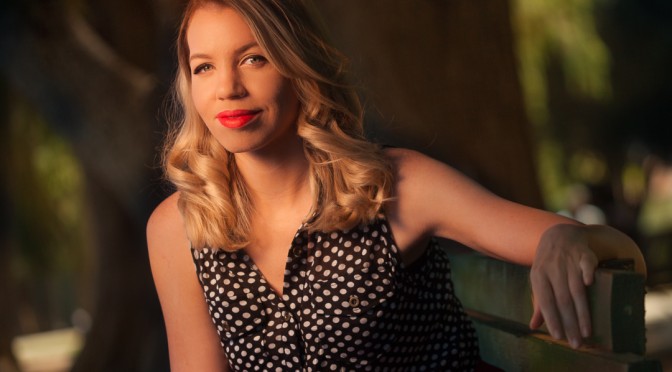
I am a fan of Westerns.
But I always wonder why their directors choose to film gunfights at high noon.
I suppose it makes sense from the gunfighter’s perspective.
The entire scene is lit by the sun.
As long as a gunslinger doesn’t have eyes that are too light-sensitive and those eyes are shielded from the glaring sun overhead, it totally makes sense.
But for portrait photographers, high noon is the devil.
Quality not quantity

For portrait photographers, when the sun is directly overhead, it means everything outdoors that you see is lit.
That means there are potentially a lot of distractions behind your subject.
Not only are the distractions lit, they are actually too well lit.
Meaning even if you use your highest shutter speed, lowest ISO and widest aperture: 1/8000 sec ISO 100 f1.4, you won’t be very successful in isolating or separating your subject from the background.
If your goal is to emphasize your subject, and it should be since this is a portrait, then you need to take control of the lighting.
Your other problem is how your subject will look with the angle of the sun striking them from directly overhead at that time of the day.
Eyes will be in deep shadow especially if your subject has deep set eyes.
It’s also likely they will be squinting.
In case you haven’t, mouse over the large vertical picture above to get an idea of what the scene looked like in reality.
I used my zoom with the fader filter attached dialed in the amount of density I wanted so I could shoot wide open at f2.9. My lens was set to 200mm ISO 100 1/125sec F2.8
Portraits at High Noon

So what if that’s the designated time for the portrait session and you can’t change it?
What if that’s the only time your subject or client is available?
(The gear I used is in parenthesis) You will need the following:
- a powerful flash (330Ws WL800 flash powered by Vagabond MiniBattery)
- a set of neutral density filters for your lens of choice (Fader filter)
- an area with shade if it’s outdoors (my local park where there are lots of trees)
- 1/4 Color Temperature Orange Gel
- Cybersync transmitter and receiver


I headed to a local park where there is a lot of shade with Asia, my model.
This bit is critical: if you hope to make a decent portrait at this time of the day, you need shade.
The more shade the better simply because even with the most powerful studio strobe, you won’t be able to overpower the noon sun unless it’s a cloudy day.
The other reason to find the shade is to minimize squinting by your subject.
Color correcting gels especially Color Temperature Orange is very important to keep around your flashes.
If you don’t use this CTO gel over your flash and you shoot in the evening or early morning with your flash, you will run into mismatched color temperatures and your post production can quickly become a nightmare even if you shoot camera raw.
In this case, I used the CTO gels to make it appear as if these were taken late in the evening or early in the morning instead of closer to noon.

